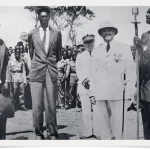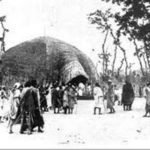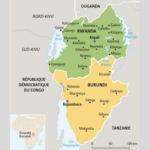The Blood Pacts In Rwanda
A relationship, expressed in kinship terminology, resulted from the blood pact which was very widespread in all groups in Rwanda. Two pensons could enter into a blood pact so long as they did not belong to the same umuryango or inzu. Blood pact between members of the same clan were however allowed. Normally only men entered this pact but cases are known (ref. Pauwels 1958) where husband and wife entered into a blood pact in particular cases where one of the parties was related to a very powerful Tutsi chief, to prevent the divulging of secrets. Whereas the Tutsi were very secretive about their blood pacts, the Hutu were much
more outspoken about them. This difference must be seen against the wider background of the particular aspects of power manipulation in central Rwanda where blood-brothers who were unknown to others could render great service by obtaining information or when acting as witnesses in court cases. The number of blood-brothers one had was related to the importance of one’s statue in the social system and therefore the powerful Tutsi of the centre and the Hutu chiefs in the peripheral areas often had a large number of blood-brothers. Moreover Banyarwanda concluded blood pacts with other people. Pages (1930 p.137) and lixnoux (1940 p.100) describe how Banyarwanda who made regular caravan safaris to Bukoba in Tanganyika had concluded blood-brother pacts with people on their way to assure themselves safe passage through non friendly territories. Even King Rwabugire concluded a blood-brother puct with the Hutu king of Bwito.
The ritual was held in private before some witnesses. While the people who became blood-brothers drank some drops of one another’s blood, the principle witness explained the obligations of mutual assistance and the supernatural punishment which would fall on the person who broke the blood pact. The nature of the ritual and the fact that Tutsi and Hutu and even Twa, although less frequently, became blood-brothers, is another example of the existence of specific cross-cutting ties between members of the three social groups. In this context the pact assumed not only the absence of any recognition of social inequality, but also a high degree of intimacy between the individuals concerned.
https://uk.amateka.net/the-blood-pacts-in-rwanda/https://uk.amateka.net/wp-content/uploads/2019/10/kera_cyane.pnghttps://uk.amateka.net/wp-content/uploads/2019/10/kera_cyane-150x150.pngSocial & cultureA relationship, expressed in kinship terminology, resulted from the blood pact which was very widespread in all groups in Rwanda. Two pensons could enter into a blood pact so long as they did not belong to the same umuryango or inzu. Blood pact between members of the same clan...BarataBarata rpierre@ikaze.netAdministratorAMATEKA | HISTORY OF RWANDA



